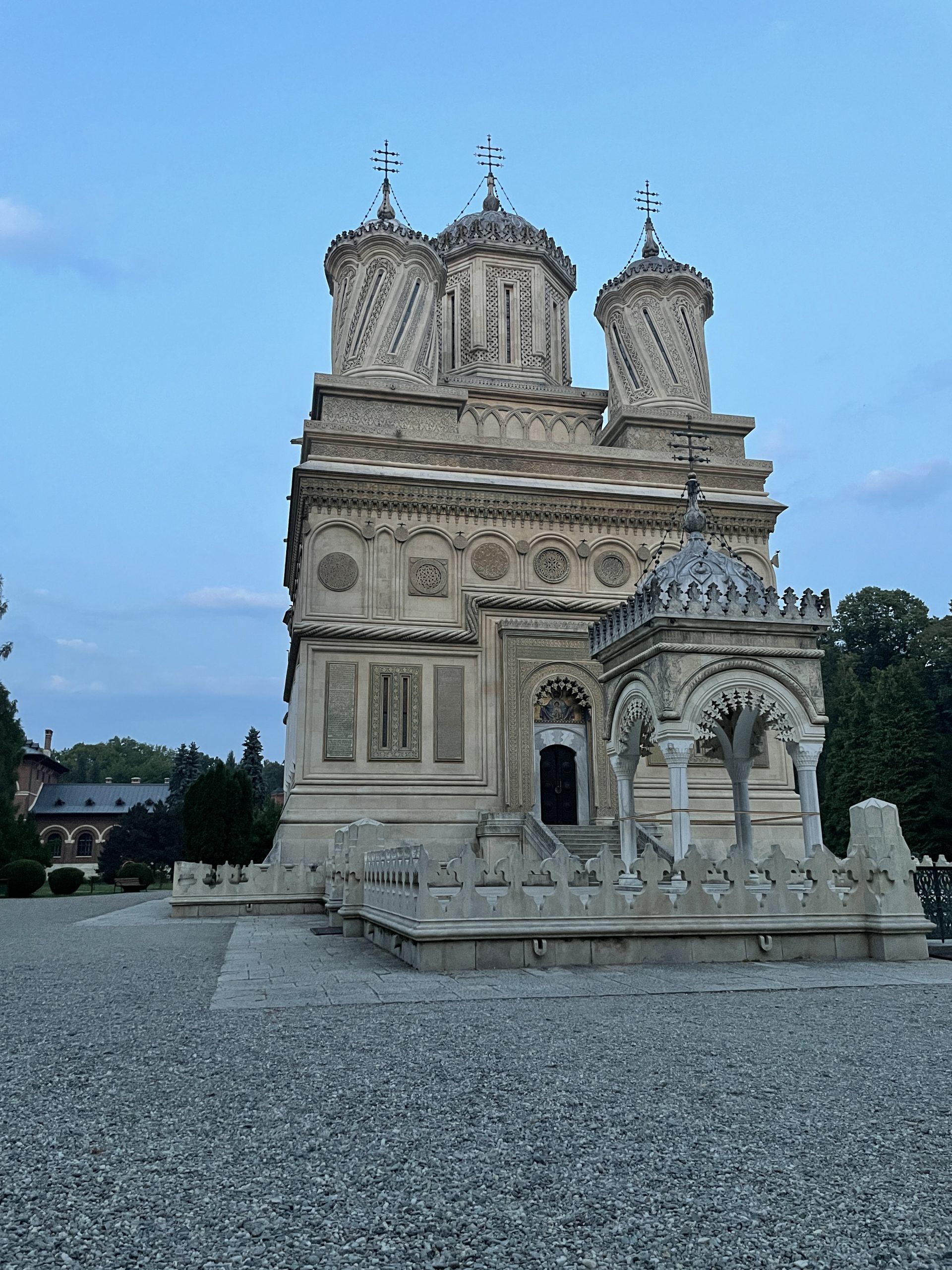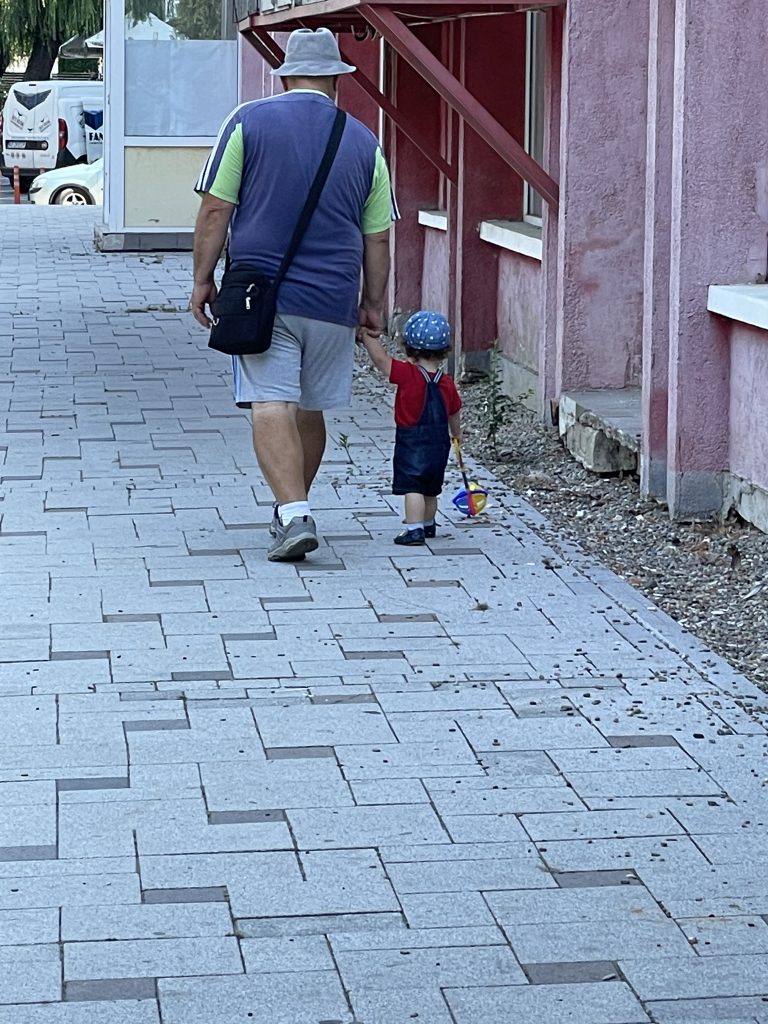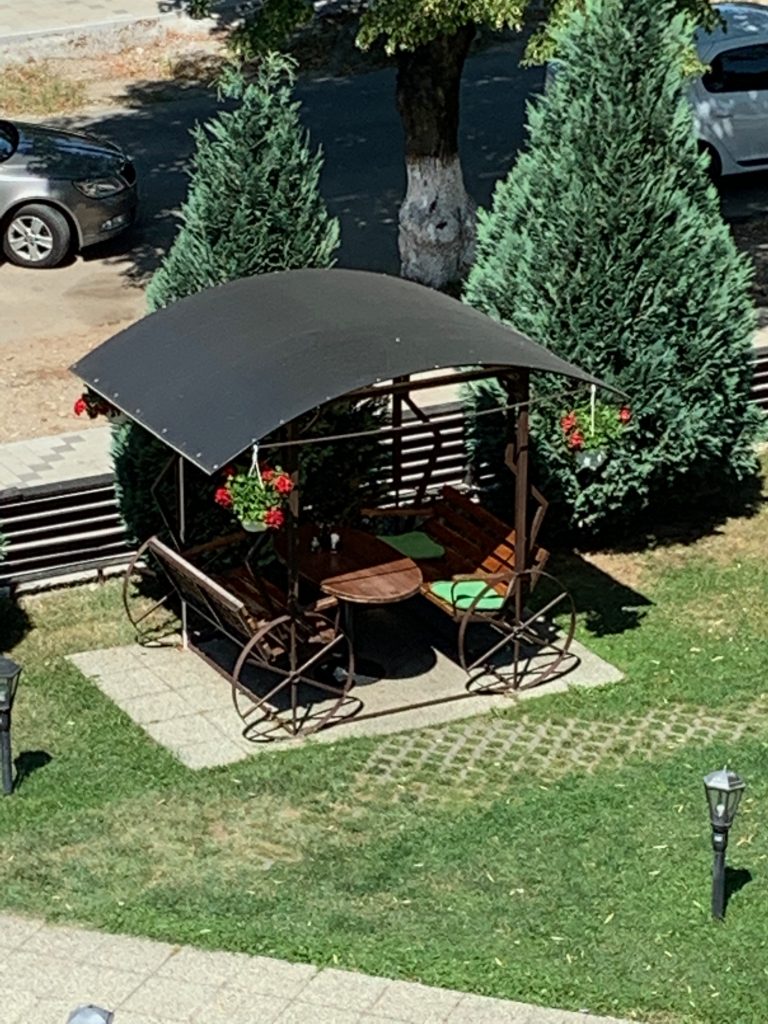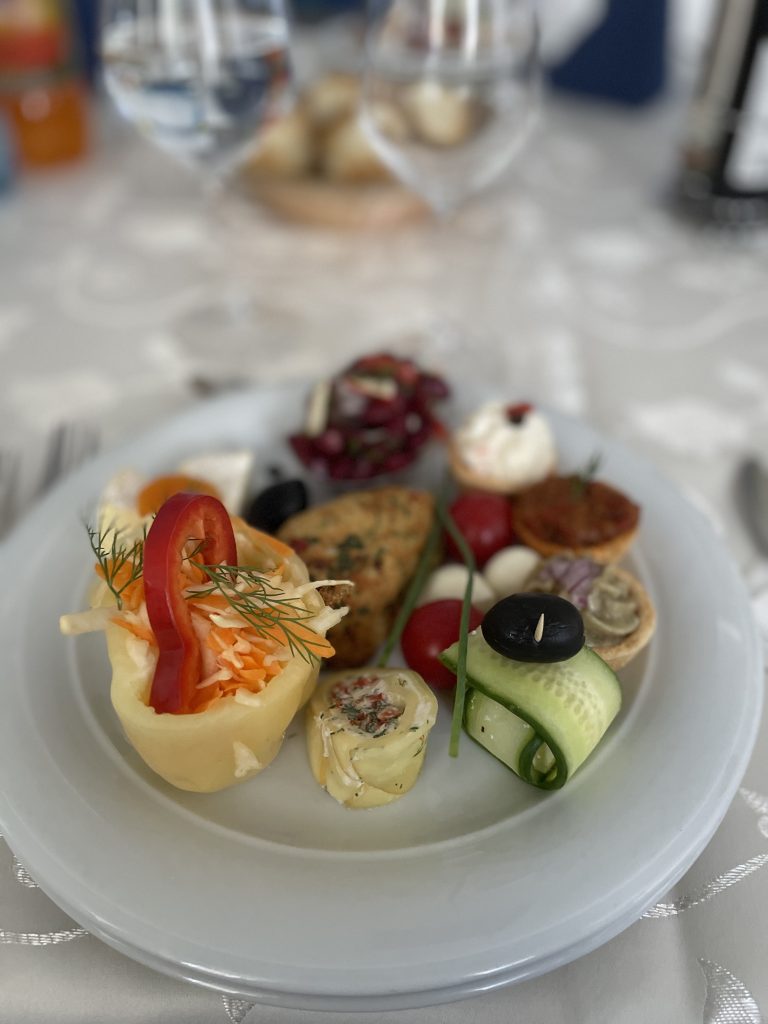Must-See Romania: Curtea de Arges

There’s a boulevard in Curtea de Argeș, Romania that never sleeps. The one-way traffic on Bulevardul Basarabilor is constant and oblivious to a speed limit. Pedestrians amble the sidewalks along the narrow, tree-lined thoroughfare at a steady pace.
Young and old, fast and slow. Here and there people pause in clusters to converse in patches of shade. Here, three middle-aged women catch up on the latest gossip. There, two stooped women dressed in black advise a young man who nods respectfully. A grandfather strolls beside a toddler boy rolling a toy popcorn popper on a stick.

When early evening comes, the benches leading to the monastery are full. A woman dressed in dark robes sings what sounds like hymns. Her voice cracks and still she sings for hours. A young couple has brought their child to ride his scooter and off he goes. Soon, he’s joined by others. Shoulder to shoulder, they clatter toward us and then past.
We spent nine days in this small Romanian town with a monumental legacy, Curtea de Argeș, which means court of the Argeș. This was once the capital of Wallachia. It is still the burial place of Romanian royals. The city of under 30,000 people traces its roots back a thousand years.
The Curtea de Argeș Monastery was built in the early 16th century, and we were there to witness a baptism. This monument is a popular venue for baptisms and weddings, in fact, we attended the wedding of the baby’s parents there in 2019. Unlike baptisms in the United States, where we live, the Orthodox ceremony is lengthy and full of tradition. The baptismal font is designed for immersing the baby; no timid sprinkling with holy water as in our Roman Catholic church. It is a beautiful ceremony and if you visit the monastery on a weekend, you will observe either a wedding or a baptism because the sanctuary is open to the public even during these ceremonies.
Only 300 meters from the monastery is the Hotel Posada, where we stayed during our visit. Posada was built during the communist regime but was recently renovated and is a very pleasant place to hang your hat. There are 49 rooms and ours had a king-sized bed and a modern bathroom. Breakfast was included every day in the spacious restaurant downstairs that offers seating inside and outside. I loved the four sets of covered facing swings with a stationery table in the center that made for pleasant drinking and dining. The restaurant’s menu is expansive, and the food is excellent.

Posada was the location for the post-baptism reception, and it was first-rate. The four-course sit-down dinner was delicious, and the presentation of reach plate was artful. Celebrations in Romania are long with weddings usually lasting until three o’clock in the morning and baptism receptions until midnight. Ours lasted from afternoon until ten o’clock and included music and dancing along with an expansive dessert table.

While in Curtea de Argeș, we enjoyed other excellent dining establishments, too. Along Bulevardul Basarabilor, we feasted on margherita pizza and a delicious salad at Marco Polo and a wood-fired veggie pizza and craft beer at Curtea Veche. We also enjoyed a Greek salad at a restaurant called New House, which has a nice pizza oven that seemed quite busy. All of these restaurants offer outdoor seating. If that sounds like a lot of pizza, it’s because we are vegetarians and pizza is a safe choice for us wherever we go.
For in-room “dining,” there are several Annabella grocery markets in the area where we purchased chips and pretzels for snacking. And as much as we dislike single-use plastics, we also stocked up on bottled water.
During our visits to Curtea de Argeș, we enjoy exploring the town. In addition to the famous monastery, a quieter historic monument is the Princely Church of Saint Nicholas (Royal Church), which was built in the 14th century. It was restored in 2003-2004 and several frescoes within the church survive. The grounds, surrounded by a stone wall, provide a pleasant walk among stone ruins and foundations. Nearby is Casa Norocea, a large estate that now houses an ethnography museum on the first floor, and on the second, paintings by Dumitru Norocea, one of the restorers of the Royal Church. Further along, a trek up a steep hill is rewarded by the reverent ruins of another old church.
The history of Curtea de Argeș thrives beside its modern commerce and architecture. This is what I like about Europe. Instead of tearing down and erasing history the way we do in the United States, the past persists among the people as reminders of their roots. Residents of Curtea de Argeș can tell you fascinating legends connected with the historic landmarks in their town. Layers upon layers of culture provide a richness to this tiny Romanian gem and it is surely worth a stop when you visit Romania.
More Romania Posts:
Preview Romania: Country Basics




Leave a Reply